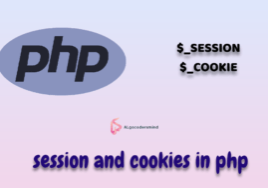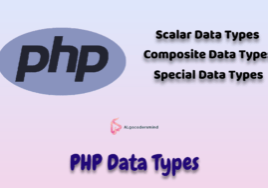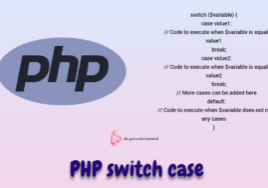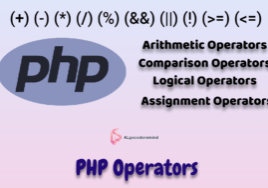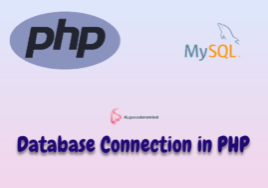What Is PHP: A Comprehensive guide to PHP Programming
Introduction to what is PHP
PHP is a widely used programming language that powers dynamic websites and web applications. In this article, we will explore the fundamentals of PHP, its features, and its role in web development. Whether you’re a beginner or have some coding experience, this article will provide you with a solid understanding of PHP and its benefits.
Table of Contents
Understanding the Basics of PHP
PHP, which stands for Hypertext Preprocessor, is a scripting language that is embedded within HTML code. It was originally designed for web development and has evolved into a versatile language used by millions of developers worldwide. PHP code is executed on the server-side, generating dynamic content that is sent to the client’s browser.
PHP: A Server-Side Language
One of the key features of PHP is its server-side nature. Unlike client-side languages such as JavaScript, PHP code is processed on the web server before the HTML is sent to the user’s browser. This allows PHP to interact with databases, handle form submissions, and perform various server-side tasks.
Setting Up a PHP Development Environment
To start coding in PHP, you need a development environment. This typically involves installing a web server, such as Apache, and a PHP interpreter on your local machine. There are also pre-packaged solutions like XAMPP and WAMP that provide an all-in-one setup. Once your environment is set up, you can create and test PHP scripts locally.
Basic PHP Syntax:
<?php
// Hello World!
echo "Hello, World!";
?>
Variables and Data Types in PHP
In PHP, variables are used to store data and provide flexibility to your code. PHP supports various data types, including strings, integers, floats, booleans, arrays, and objects. Understanding how to declare and manipulate variables is essential for building dynamic applications.
Working with Variables:
<?php
// Variable declaration and assignment
$name = "John Doe";
$age = 25;
// Outputting variables
echo "My name is " . $name . " and I am " . $age . " years old.";
?>Control Structures: Conditional Statements and Loops
Control structures in PHP allow you to control the flow of your program. You can use conditional statements like if-else and switch-case to make decisions based on certain conditions. Loops, such as for, while, and foreach, enable you to perform repetitive tasks and iterate over arrays or other data structures.
Conditional Statements:
<?php
// Checking if a number is positive, negative, or zero
$number = 10;
if ($number > 0) {
echo "The number is positive.";
} elseif ($number < 0) {
echo "The number is negative.";
} else {
echo "The number is zero.";
}
?>
Loops:
<?php
// Displaying numbers from 1 to 5 using a for loop
for ($i = 1; $i <= 5; $i++) {
echo $i . " ";
}
?>
Working with Arrays:
<?php
// Creating and accessing an array
$fruits = array("Apple", "Banana", "Orange");
// Displaying each fruit in the array
foreach ($fruits as $fruit) {
echo $fruit . " ";
}
?>
Functions and Objects in PHP
PHP supports functions, which are blocks of reusable code that can be called multiple times within a script. Functions help organize code and improve code reusability. Additionally, PHP is an object-oriented programming language, allowing you to create classes, objects, and methods to build modular and scalable applications.
Working with Databases and SQL
PHP has excellent support for database integration. You can connect to various database systems using PHP extensions, such as MySQLi and PDO. With PHP, you can execute SQL queries, fetch data from databases, and perform CRUD (Create, Read, Update, Delete) operations, making it an ideal choice for building dynamic websites and web applications.
Handling Forms and User Input
Forms are a common element in web applications, and PHP provides powerful features for handling form submissions and user input. You can retrieve user data using the $_POST and $_GET superglobal arrays, validate and sanitize input, and display appropriate error messages or process the submitted data.
File Handling in PHP
PHP enables you to interact with files on the server, such as reading from and writing to files. You can manipulate file properties, upload files, and create directories using PHP’s file handling functions. This functionality is vital for tasks like handling user uploads, managing logs, and generating reports.
Error Handling and Debugging
Effective error handling and debugging are crucial for identifying and resolving issues in your PHP code. PHP provides various error reporting levels and mechanisms to catch and handle errors gracefully. Additionally, there are tools and techniques available for debugging PHP code, such as logging, breakpoints, and stack traces.
Security Best Practices in PHP
Web security is of utmost importance in PHP development. By following security best practices, you can protect your applications from vulnerabilities and attacks. This includes sanitizing user input, preventing SQL injections and cross-site scripting (XSS) attacks, implementing secure authentication and authorization mechanisms, and staying up to date with security patches.
Performance Optimization Techniques
Optimizing the performance of your PHP applications ensures they run efficiently and provide a smooth user experience. Techniques like code optimization, caching, database optimization, and minimizing file operations can significantly improve the performance of your PHP code.
Integrating PHP with HTML, CSS, and JavaScript
PHP can be seamlessly integrated with HTML, CSS, and JavaScript to create dynamic web pages. You can embed PHP code within HTML files, use PHP to generate HTML dynamically, and leverage JavaScript to enhance interactivity. This integration allows you to create interactive and responsive web applications.
Exploring PHP Frameworks
PHP frameworks provide a structured approach to building web applications and simplify common development tasks. Popular PHP frameworks like Laravel, Symfony, and CodeIgniter offer features such as routing, database abstraction, template engines, and authentication systems. Learning a framework can boost your productivity and help you build robust applications faster.
The Future of PHP
As technology continues to evolve, PHP remains a relevant and widely used programming language. The PHP community is actively involved in its development, regularly releasing updates and improvements. PHP 8, the latest major version, introduced significant performance enhancements and new features. With its large ecosystem and extensive community support, PHP is expected to remain a prominent choice for web development.
Conclusion
In this article, we explored the basics of PHP, its server-side nature, and how to set up a PHP development environment. We discussed variables, control structures, functions, and objects in PHP, as well as its database integration capabilities. We also covered important topics such as file handling, error handling, security best practices, and performance optimization. Additionally, we examined how PHP can be integrated with HTML, CSS, and JavaScript, and the benefits of using PHP frameworks. By understanding the fundamentals of PHP, you can start building dynamic web applications and contribute to the ever-growing web development landscape.
Frequently Asked Questions
Q: Is PHP a difficult programming language to learn?
A: PHP is considered relatively easy to learn, especially for beginners with prior programming experience. Its syntax is similar to C and other programming languages.
Q: Can I use PHP to create mobile applications?
A: PHP is primarily used for web development, but you can create mobile applications with frameworks like React Native or by building a web API and consuming it in a mobile app.
Q: Are there any alternatives to PHP for web development?
A: Yes, there are alternatives like Python (Django), Ruby (Ruby on Rails), and JavaScript (Node.js) that can be used for web development.
Q: Is PHP still relevant and widely used in the industry?
A: Yes, PHP is still highly relevant and widely used in the industry. It powers a significant portion of the web, and many popular websites and applications are built using PHP.
Q: Can I use PHP on different operating systems?
A: Yes, PHP is cross-platform and can be used on various operating systems such as Windows, macOS, Linux, and Unix.
Our Recommendation
- Session and Cookies in PHP: A comprehensive guide
- PHP Data Types – A Comprehensive Guide with Code Examples
- PHP Switch Case: Structure for Efficient Code Execution
- PHP Operators with Code Example: A Comprehensive Guide
- PHP Variable Scope: Mastering the Fundamentals for Efficient Code
- Implode and Explode in PHP tutorial
- PHP String Functions: Enhancing String Manipulation tutorial
- Exploring Array in PHP: A Comprehensive Guide
- Oops Concepts in PHP: A Guide with Code Examples
- Ternary Operator in PHP: Examples and Best Practices
- Pagination in PHP and MySql: Simplify Your Data Display and Navigation
- Secure and Simple: Forgot Password in PHP
- Login in PHP Secure & Reliable
- CRUD Operation in PHP: A comprehensive guide
- Inheritance in PHP: A comprehensive guide
Akhand Pratap Singh
Related Post
Newsletter
Recent Posts
- How to Upload Image into Database Using PHP
- Inheritance in PHP: A comprehensive guide
- Image Resize in Laravel 10 : A comprehensive Guide
- Laravel Passport: A comprehensive guide in Laravel 10
- Laravel JWT Tutorial: A comprehensive guide
- Import and Export Excel in Laravel: A Step-by-Step Guide
- Rest API in PHP: Building Powerful and Scalable Web Services
- Array to String in PHP – A Comprehensive Guide
- Event Loop in JavaScript: A comprehensive guide
- Ternary Operator in JavaScript: A Comprehensive Guide





